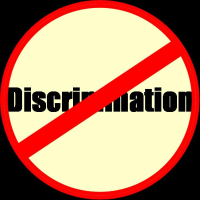Judge Orders New Palmdale Elections Because of Bias; Other Cities May be Next

Fifty-four percent of residents in the high-desert city of Palmdale, just north of Los Angeles, are Latino. But, as usual, none of the city council members elected last month is.
Los Angeles Superior Court Judge Mark Mooney said that is a direct result of the system used to select the council—a citywide vote rather than by-district—and declared it a violation of the state Voting Rights Act. He tossed out the election results last Friday, drew district boundaries for the city and scheduled a new vote for June 3, when California holds its statewide primary.
Palmdale said it would appeal the decision, while Modesto, Compton, Anaheim, Escondido, Whittier and other cities embroiled in civil rights lawsuits over selection of their city councils look nervously on.
Although Latinos and African-Americans make up about two-thirds of the city’s population, only one Latino and no blacks had been elected to the council since 1962 until a black man was elected in November. The city voted in 2001 to reject an ordinance that would have introduced district voting.
Civil rights activists filed a lawsuit in February seeking to have the system changed. James Ledford, elected mayor 12 times since 1992, testified in a deposition that he was unaware of any city council member’s race and did not know there had been only one non-white elected during his tenure. According to the Times, he responded “no” when asked if it bothered him “in any way that racial minorities in Palmdale might feel that they are not being represented in the City Council.”
The economically depressed Antelope Valley, home to the cities of Lancaster and Palmdale, has a history of racial intolerance. African-American families were routinely shepherded to segregated communities in the 1960s, and a migration of blacks and Latinos to the area in the 1980s exacerbated already simmering racial antagonism. Between 1990 and 2010, the racial makeup of Palmdale shifted from 76% white to 49%, according to the U.S. Census Bureau. The African-American population more than doubled to 14.8% from 6.4% and the Latino/Hispanic community soared from 22% to 54%.
A two-year federal investigation (pdf) of the Los Angeles County Sheriff’s Department found, in July, that deputies routinely discriminated against minority groups there and the U.S. Department of Justice acknowledged in its report that “racial intolerance is an unfortunate part of the history of the Antelope Valley.”
Judge Mooney ruled in July that the city’s election was unlawful and in September blocked it pending his decision on how to conduct a legal one. Ballots had already been printed and distributed.
Palmdale appealed his decision and was granted relief in mid-October by the California Second District Court of Appeal, allowing it to hold the election on November 5, although the three-judge panel technically did not kill the injunction. The court ruled 2-1 that Judge Mooney had not meant to block the election with his ruling. They knew this because he had used the word “or” in forbidding an at-large election, counting of ballots or certification of the results.
If he had meant to kill the election, he would have used the word “and,” they said.
–Ken Broder
To Learn More:
Judge Kicks out Palmdale City Council, Orders Special Election (by Christina Villacorte, Los Angeles Daily News)
Palmdale Ordered to Hold New Municipal Elections (by John Rogers, Associated Press)
Palmdale Ordered to Hold by-District Election for City Council Posts (by Jean Merl, Los Angeles Times)
Nov. 5 Palmdale Vote Is a Go (by Merdies Hayes, Our Weekly)
Palmdale Election Results (by Kelly Goff, Los Angeles Daily News)
Findings Letter (U.S. Department of Justice) (pdf)
- Top Stories
- Controversies
- Where is the Money Going?
- California and the Nation
- Appointments and Resignations
- Unusual News
- Latest News
- California Forbids U.S. Immigration Agents from Pretending to be Police
- California Lawmakers Urged to Strip “Self-Dealing” Tax Board of Its Duties
- Big Oil’s Grip on California
- Santa Cruz Police See Homeland Security Betrayal in Use of Gang Roundup as Cover for Immigration Raid
- Oil Companies Face Deadline to Stop Polluting California Groundwater





